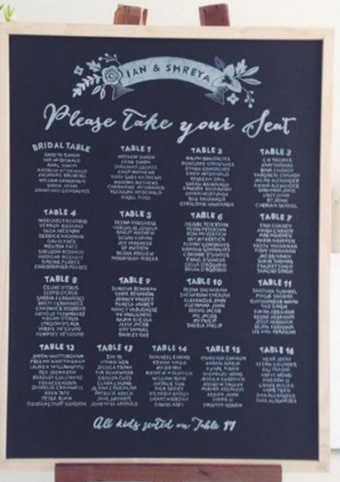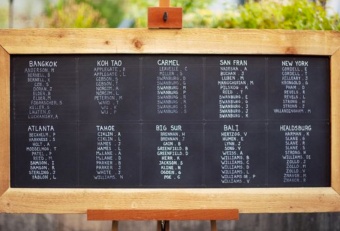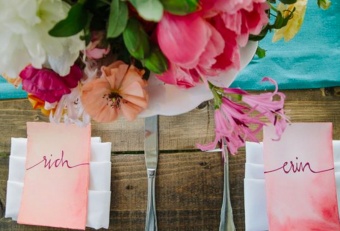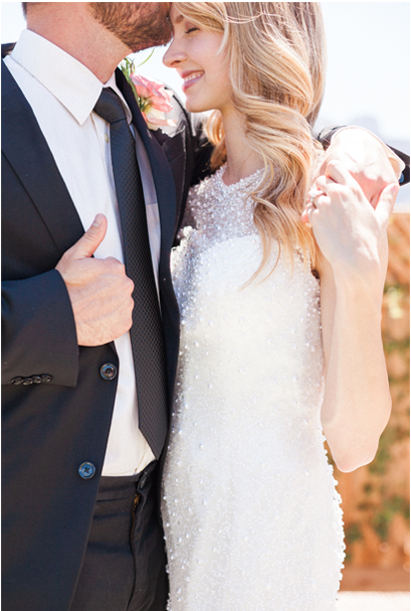Tips For Creating The Perfect Wedding Seating Chart
March 2nd, 2016
Whether you decide on a small, intimate wedding, or a large, more extravagant wedding, an important aspect you should never overlook is your seating arrangement for yourself and your guests. The reason for planning a seating chart is to avoid confusion and stress on your big day.
Here are a few tips that will make creating the perfect seating chart easy as cake!
Determine the size of your wedding.
First, you should take time to sit down with your groom to decide how many guests you want to invite to your special day. Do you want your guests to have a plus one? Are you going to invite your distant relatives? What about your parent’s friends? Determining the guests list and party size of your wedding will help smooth out the seating process.
If you decide on a smaller intimate wedding (50 or less guests), you may or may not want to provide specific seating arrangements for your guests. You could choose to just have a detailed list of those at the bridal table and leave the rest of the guests to seat themselves. Another option can be to assign tables for your guests and let them decide who they would like to sit next to at the table.
If you decide on a medium or large size wedding (75 +guests), you should set up a formal seating chart with assigned tables and seats. This way, guests would feel special, as you took your time to decide where they should sit and with whom they should sit with – and minimize the amount of chaos on your big day. Also, having a seating chart would be helpful in terms of catering, as your caterer would know what your guests ordered to execute a formal plated dinner.
Who Sits Where?
After you’ve determined the size of your wedding, here comes the tricky part: where you’ll place each guest.
You should first receive back your RSVP’s about a week or two before your big day and check in with your caterer to see when you need to provide your final count. You should begin creating an outline of your seating chart. List out your RSVP’d guests (and their plus ones) according to category (groom’s friends, groom’s family, bride’s friends, bride’s family, co-workers, extended family, etc.). If you’re more of a visual person, draw a simple layout of the tables and place guests using sticky notes at each table.
Family Tables: Often times, parents of the bride and groom sit opposite of each other at a large family table closest to the bride and groom, with other close family members, friends, and the officiant. On the other hand, the bride and groom’s parents may wish to “host” their own table, consisting of their own close family and friends. To avoid any awkwardness or debates in the case of divorced parents, you may want to split them up into separate tables and allow them to “host” their own tables as well.
Also, be sure you know of any longstanding feuds or landmines between family members and friends you need to avoid when finalizing your seating chart. You may want to seat Aunt Hilgrid on Table 6 while Aunt Becky is across the room on Table 11 – trust me, they’ll thank you.
General Guidelines for the Rest of Your Guests: As for the rest of your attendees, try your best to sit them at tables where they would be most comfortable. Group them by different aspects of life (childhood, high school, college, work, etc.) and try to introduce them to people with similar interests and backgrounds.
Singles/Matchmaker: Definitely avoid seating your single friends at a table full of couples; this may make them feel awkward. This may also be your chance to play matchmaker. If you’ve been dying to set up your friend with a coworker, cousin or other friend, take this as an opportunity to discretely sit them next to each other and leave the rest up to fate.
Children: Lastly, children should be seated with their parents, but you may want to opt for a “kids’ table” if you plan on having a lot of children attend. Strategically place this table close to parents, with some games or toys to keep them occupied throughout the reception.
Another tip is to leave room for flexibility, as you are bound to have “no shows” and guests who show up without RSVPing.
Method of Seating Guests.
Now that you’re pretty much done with the seating chart, the only thing left is how you’ll seat your guests.
Escort cards: These cards are used in extremely formal seating plans. They consist of envelopes with each guest’s name on the outer envelope and their table number on the inner card.
Place cards: These tented cards are placed in alphabetical at the entrance of the reception table and indicate what table each guest will be seated; usually containing the guest’s name and table number. Guests are allowed to assign their own seat once at the table.
Seating chart: Usually displayed in a pretty frame, alphabetically labeling each guests’ name and the table they will sit at. Typically coupled with place cards at each table to display the guest’s designated seat.
Bride and Groom seating.
If you and your hubby choose to have an intimate table of just you two, opt for the “sweetheart” table, where you two can enjoy the rest of the reception together. Alternatively, you two can choose to sit on a long, rectangular table (typically called the “head table” table) in the focal center of the room, facing your guests. This table typically includes the bridal party; seating the bride to the groom’s right; the best man to her left; the maid of honor to the groom’s left, and alternating bridesmaid and groomsmen from there.
However, if you’re not into traditions and prefer a more social setting, you may want to sit at your parents’ table or leave open seats at each guest table to walk around and mingle with friends and family.







Comments:
Leave a comment: